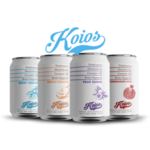The history of modern healthcare is littered with advances that stand out from others as changing the course of the space. The transition from naturally sourced to recombinant DNA produced insulin. The introduction of pacemakers and stents in the cardiac sector. Going back a little further, the introduction of penicillin and preventative vaccination. All of these events have resulted in dramatic shifts in the way we treat patients in their respective associated patient populations.
Since the turn of the century, advances in the healthcare space have come quicker than in perhaps any other period in history. Technological advance, underpinned by advances in modern computing and the internet, has served to compound research and development efforts and many areas of healthcare and treatment are unrecognizable from just 20 or 30 years ago.
With this in mind, here are three companies working on technologies that could bring about these sorts of dramatic shifts in their target areas in the very near future.
VBI Vaccines, Inc. – Ordinary Shares (NASDAQ:VBIV) – Cold Chain Technology
Most reading will know this company primarily for its third-generation hepatitis B vaccine Sci-B-Vac. The vaccine is approved in a number of regions globally already and is in the late stages of clinical development in the US, Europe and Canada. It’s based on proprietary technology developed by the company and seeks to dramatically improve on the immunogenicity of the currently available standard of care hepatitis B vaccine’s in the above-noted countries. What many won’t realize, however, is that parallel to its hepatitis B program, VBI has developed a technology that allows for the removal of vaccine products from what’s called the Cold Chain.
Modern-day vaccines use fragments of protein called antigens to elicit an immune response to a particular virus. These protein fragments are incredibly fragile, however, and need to be kept within a strict and steady temperature range – between 2°C and 8°C. This range is known as the Cold Chain and it adds around 20% onto the cost of vaccine production and distribution.
And it’s not just a cost issue. Failure to maintain the Cold Chain results in as much as 50% (as estimated by the World Health organization, or WHO) of vaccines being wasted globally. This number increases in developing nations, where vaccines are generally needed the most.
In an attempt to solve this problem, VBI has developed what it calls its LPV thermostability platform. The platform uses a lipid casing to protect the antigen (protein fragment) in the vaccine from outside temperature. Because the antigen (or antigens) are protected, they can withstand temperatures of up to 40°C for more than a year. Proof of concept testing demonstrated that an influenza vaccine maintained its efficacy for 12 months at 40°C, a rabies vaccine did the same for 18 months at 40°C and an MMR vaccine lasted for eight weeks at 37°C. These are vaccines that won’t last a few hours outside the Cold Chain in their current form.
The company has ongoing collaboration efforts with Sanofi SA (ADR) (NYSE:SNY) and GlaxoSmithKline plc (ADR) (NYSE:GSK), both of which are investigating the potential application of the LPV platform to their respective vaccine portfolio.
If the technology picks up the relevant regulatory approvals it won’t just change the way vaccines are transported, stored and – by proxy – accessed by those who need them, it could make them cheaper and reduce wastage by as much as 50%.
Illumina, Inc. (NASDAQ:ILMN) – Liquid Biopsy Technology
in January last year, healthcare giant and diagnostics incumbent Illumina announced it would be putting together a team solely dedicated to the development of liquid biopsy technology in oncology, and that it would spin out this team as a separate entity called Grail. While Illumina remains the largest stakeholder in Grail (a 20% holding at last count), the startup has since raised more than $1 billion in investor capital and counts among its stakeholders ARCH Venture Partners, Jeff Bezos and Bill Gates.
So what is the technology?
Current cancer diagnostics technology has essentially remained the same for three decades. Physicians use indirect methods to detect the presence of surrogate biomarkers – biomarkers that might not become detectable until the late stages of a cancer’s development – and this results in the late stage detection of (and the resulting inability to successfully treat) cancer in a large portion of diagnoses.
With a liquid biopsy, the hope is a physician could use a liquid sample to detect the presence, and stage, of a very large number of cancers – and this is the important part – before they develop to a grade at which they become untreatable. All tumors spit out fragments of DNA and RNA that, if discovered, can be used to identify their presence. If a physician can take a blood sample and test this sample for fragments of the telltale DNA or RNA, it could result in quick and easy diagnostics, and a very high early detection rate. To put this another way, if a patient could regularly visit a general practitioner for a quick cancer will test, the chances of them doing so (and in turn, early stage cancer being detected) increases as compared to the chances of early detection if the patient needs to give a tissue sample of a particular organ.
Historically, the development of this technology has proved very difficult. The primary difficulty lies not in the identification of the fragments themselves, but in the differentiation between fragments deriving from benign tumors and malignant tumors. If the FDA is going to approve a liquid biopsy test, the company is going to have to show that it has a very low false positive rate, and this necessitates a very large trial size – we are talking hundreds of thousands of patients, the scale of which is generally only reserved for post-marketing studies in things like aspirin or statins.
Illumina recognizes this and Grail is currently undertaking said trials in a couple of cancer types in partnership with a number of university hospitals in the US. There is a fair bit of work to do, but with $1 billion in investor capital behind it, and some of the biggest names not just in healthcare but in global industry supporting its efforts, Illumina, through Grail, might finally bring this game-changing approach to cancer detection into reality.
Johnson & Johnson (NYSE:JNJ) – Ketamine for Depression
Major depressive disorder affects approximately 16 million people in the US. Globally, this number rises to more than 121 million people. The condition is an extremely serious, biologically based disease which can prevent sufferers from enjoying life and functioning normally. It’s a major contributor to suicide rates and in the US alone, there are more than 41,000 suicides each year, many of which result from untreated or poorly treated major depression. Just 30% of patients on currently available antidepressants achieve remission. Worse than this, however, is the fact that there are no effective, approved direct label therapies for major depressive disorder. Antidepressants are used, but their delayed onset of effect, generally around three to six weeks, limits their value in treating acutely suicidal patients.
This onset lag is a huge problem and one that – historically – has been at the root of the difficulty in treating this 120 million individual-strong population. Johnson and Johnson, through its subsidiary Janssen, thinks it has found an answer to the problem, and that answer is ketamine.
Ketamine, in the human healthcare space, is generally used as an anesthetic. Specifically, it’s used to kick start the anesthesia process and maintain it during surgery. In animals, it’s often used as a tranquilizer. Humans also often use ketamine recreationally based on its hallucinogenic effects. Over the last five years, however, a growing body of evidence suggests that it could be used to treat the massive population of major depressive disorder suffers that, right now, have essentially no effective options.
Interestingly, scientists don’t really know how or why it works as it does. Not even in its anesthesia use case. Regardless of the knowledge gap, however, there’s an increasing argument for application to the depression space and Janssen is pushing a program that could serve to bridge to this application.
In studies conducted by the company, the drug (called eseketamine) demonstrated rapid onset efficacy, hours as opposed to the months associated with conventional antidepressant options, and sustained clinical benefit. It’s currently under investigation as part of six phase III studies that – if successful – will underpin a registration application with the FDA in the US.
If the FDA approves the drug in a major depressive disorder indication, it would represent the first new approach to treat major depressive disorder available to patients in the last 50 years.
The drug has Breakthrough Designation and data should start to hit press during early to mid-2018.












